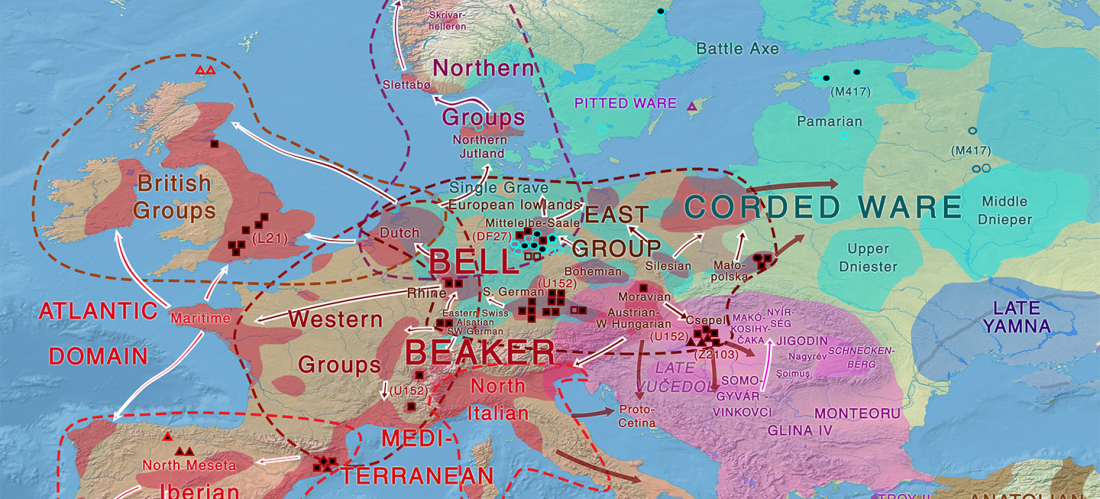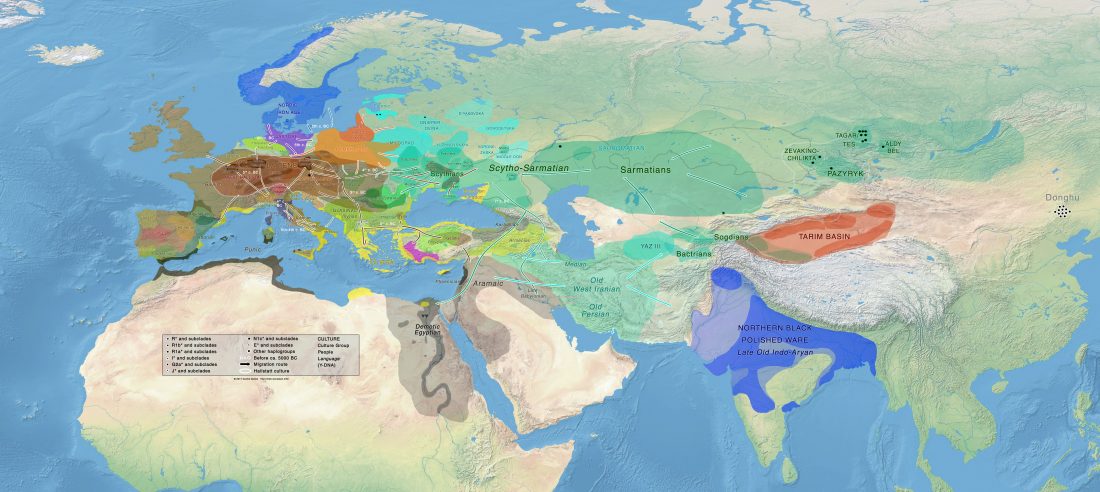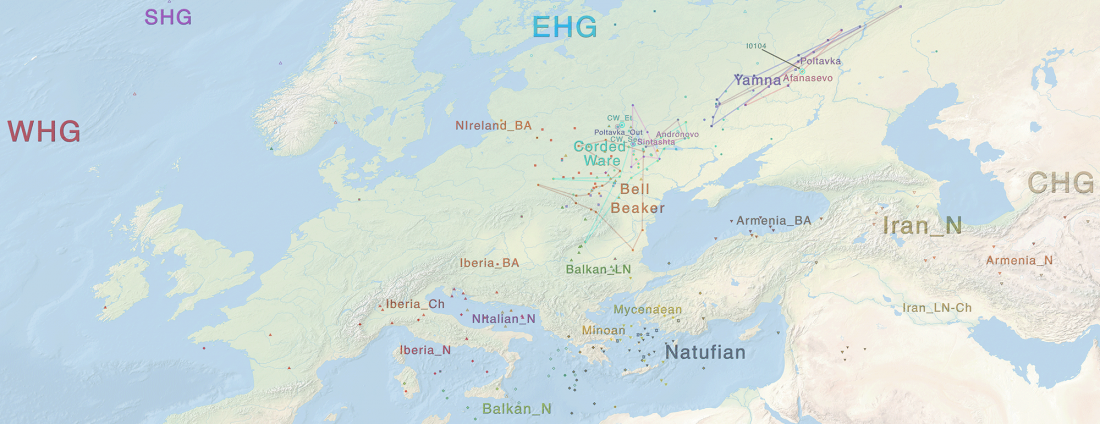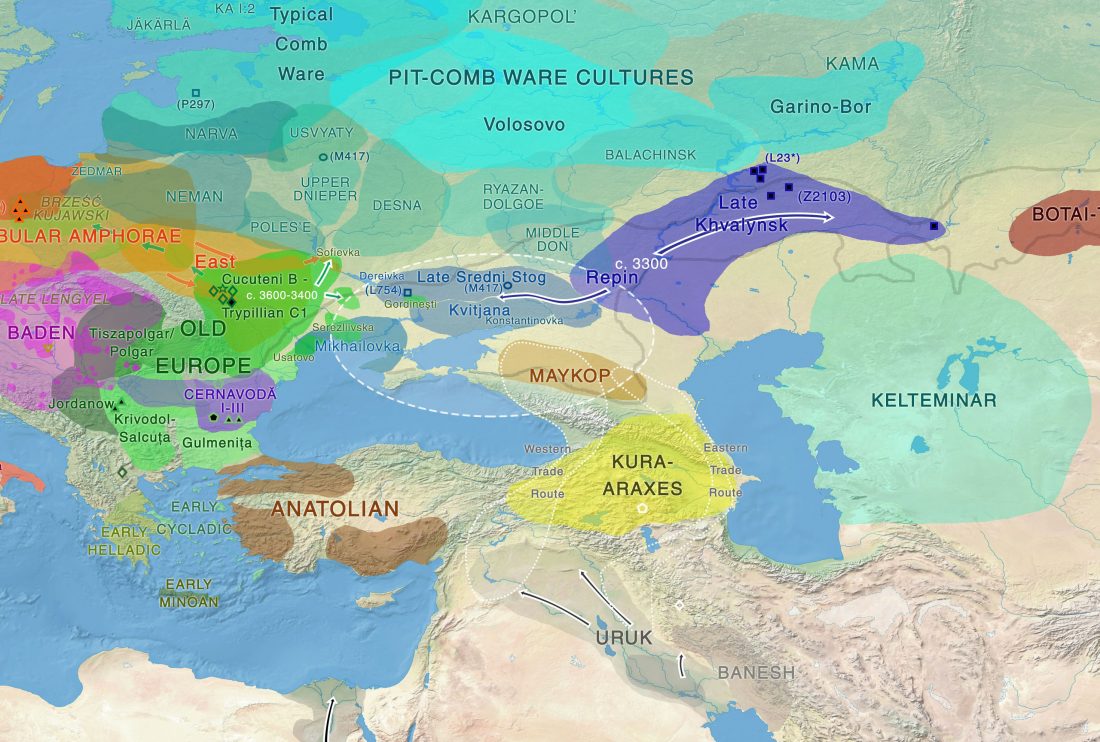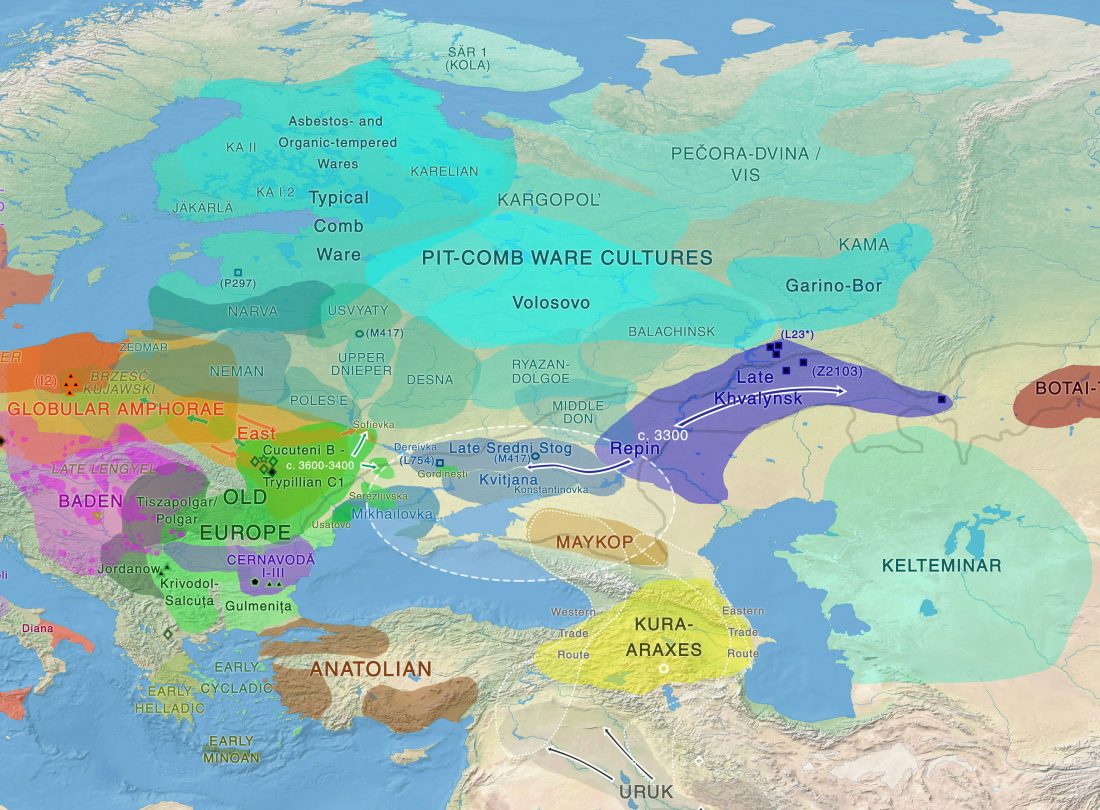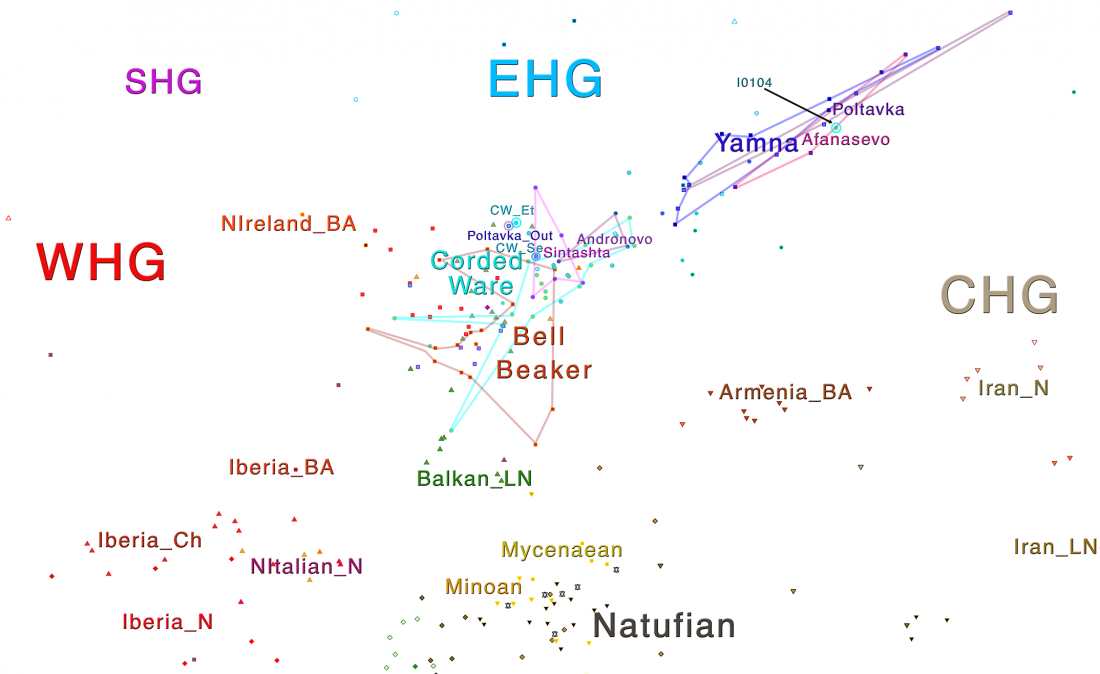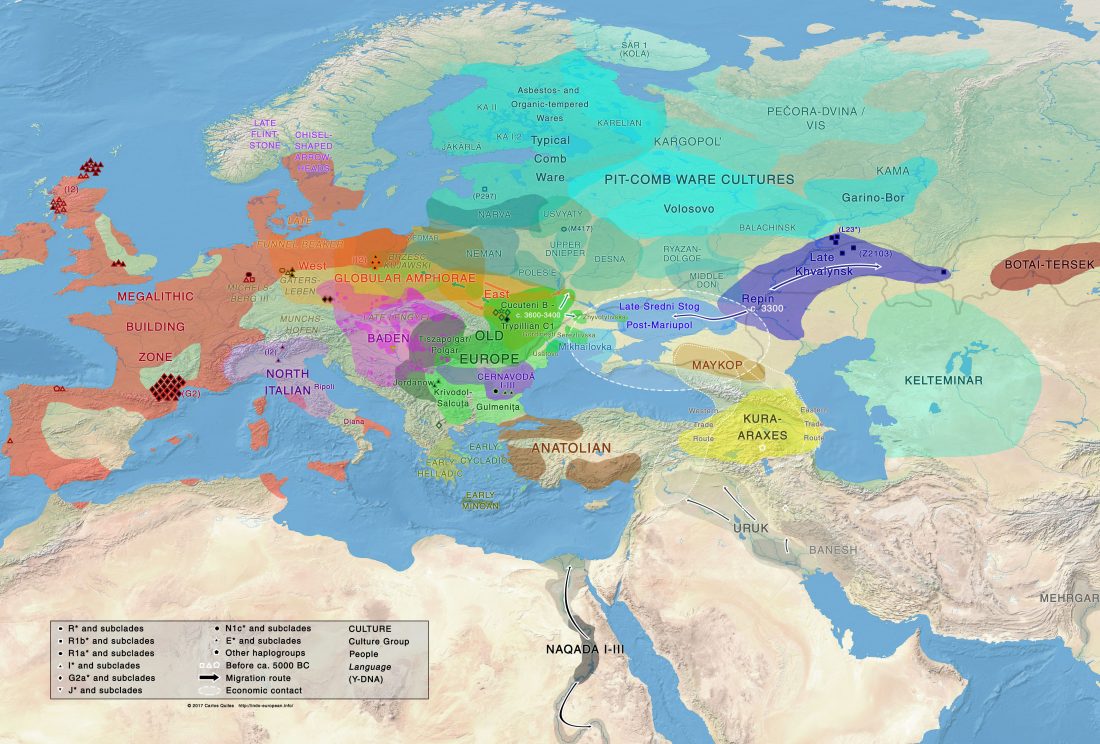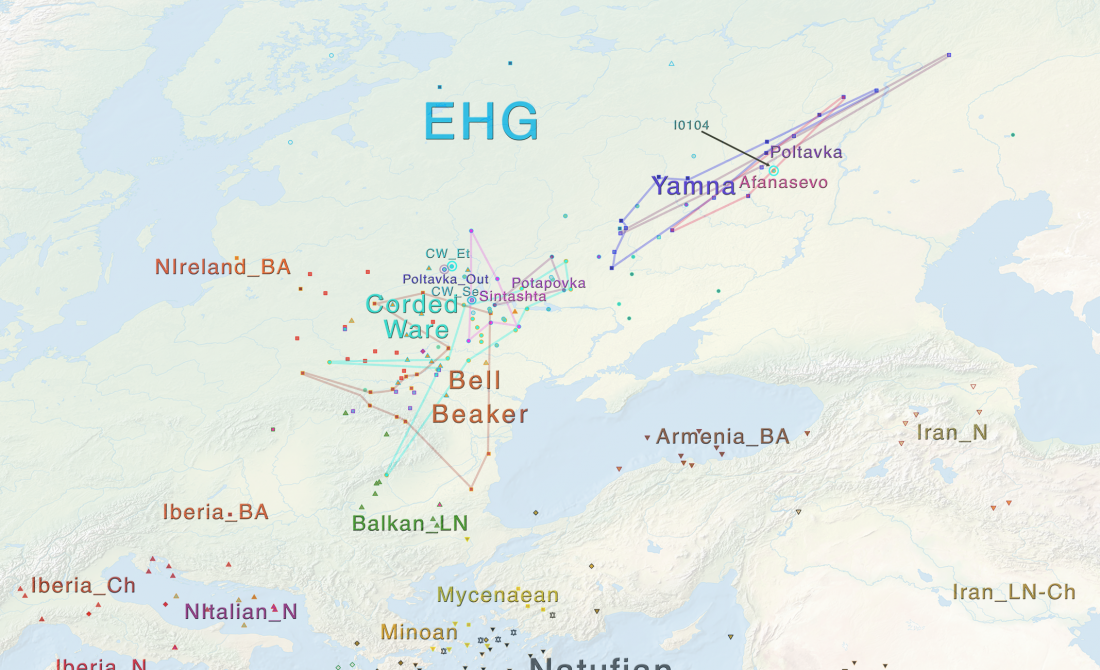In the latest revisions of the Indo-European demic diffusion model, using the results from the article Early Divergent Strains of Yersinia pestis in Eurasia 5,000 Years Ago, by Rasmussen et al., Cell (2015), I stated (more or less indirectly) that the high east-west mobility of the Corded Ware migrants across related cultures might have been responsible for the spread of this disease, which seems to have been originally expanded from Central Eurasia.
New results appeared recently in the article The Stone Age Plague and Its Persistence in Eurasia, by Valtueña et al., Current Biology (2017), which … Read the rest “Stone Age plague accompanying migrants from the steppe, probably Yamna, Balkan EBA, and Bell Beaker, not Corded Ware”
